Discover the actionable SEO tactics that will help your brand win in the search results.
It's no secret that ranking at the top of the organic search results can dramatically impact the profitability of your business by providing a consistent source of new leads and/or customers.
But getting to the top spot in organic search is no easy feat.
In fact, it's incredibly difficult.
However, in this post, we're pulling back the curtains on how we implement SEO initiatives to help you:
- Implement advanced on-page optimizations to outmaneuver competitors in the search results and win more traffic.
- Enure that your content is being properly amplified by 3rd party sites, increasing your site's domain authority while providing quality referral traffic.
- Organize and interlink your content to maximize the effectiveness of existing content for both search engines and your site visitors.
- Stay ahead of any potential technical issues that could impact your site's UX and organic performance.
These are the tactics and strategies we use to help SMBs and enterprise companies transform their organic performance - one client even drove an extra 40,000 organic sessions in the first 12 months!
If you're looking for actionable tactics to improve your SEO performance, you're in the right place. Let's jump in.
Integrating SEO Principles With UX, Content Marketing, & PR
Gone are the days of black hat SEO and spammy tactics designed to trick search engines. Today, Google is not only striving to provide the best answers to a user's query. They're looking to provide the best overall experience for users.
The word experience is important to harp on.
Because that means SEO has evolved significantly. It's blurred the lines between UX, Content Marketing, and PR (among other disciplines as well).
So where do you draw the line? How do you differentiate what's SEO, and what isn't? If a site redesign will boost engagement from site traffic, which can influence rankings, is that SEO? And if so, how do we prioritize resources for different SEO initiatives?
The SEO Framework - 3 Pillars for Organic Success
To simplify things, we tend to split SEO tactics into three buckets:
- Technical - Specific issues that should be always monitored and corrected on every site. Think of this as the foundational SEO efforts that should never be neglected and are always under your control.
- On-page - Upgrades that improve your content's search engine visibility, UX, and organizational structure.
- Off-page - Strategic initiatives that build reach and authority for your website, but are not always implemented directly on the site. (Building links and mentions through co-branded content is a common example).

Though there's no one size fits all approach and every SEO strategy should be tailored for each brand, the tactics below are intentionally listed to capitalize on low effort / high impact updates first. We've found that quickly addressing any low hanging fruit can bring some quick wins in the short term while more time-intensive initiatives like content development are in-progress.
Technical SEO & Maintenance: The Operational "Must Haves"
The majority of these issues can be monitored through reoccurring scheduled crawls with insights delivered to your inbox. Though there's plenty of tools available here, we'll typically use a combination of Moz, Screaming Frog, and Google Search Console.
- 404s: This one's easy. Missing pages are never good. 404's should be 301'd to relevant pages. Also, a well crafted 404 page can go a long way in retaining visitors. Inject your brand's personality and provide links to core pages to help them navigate the site.
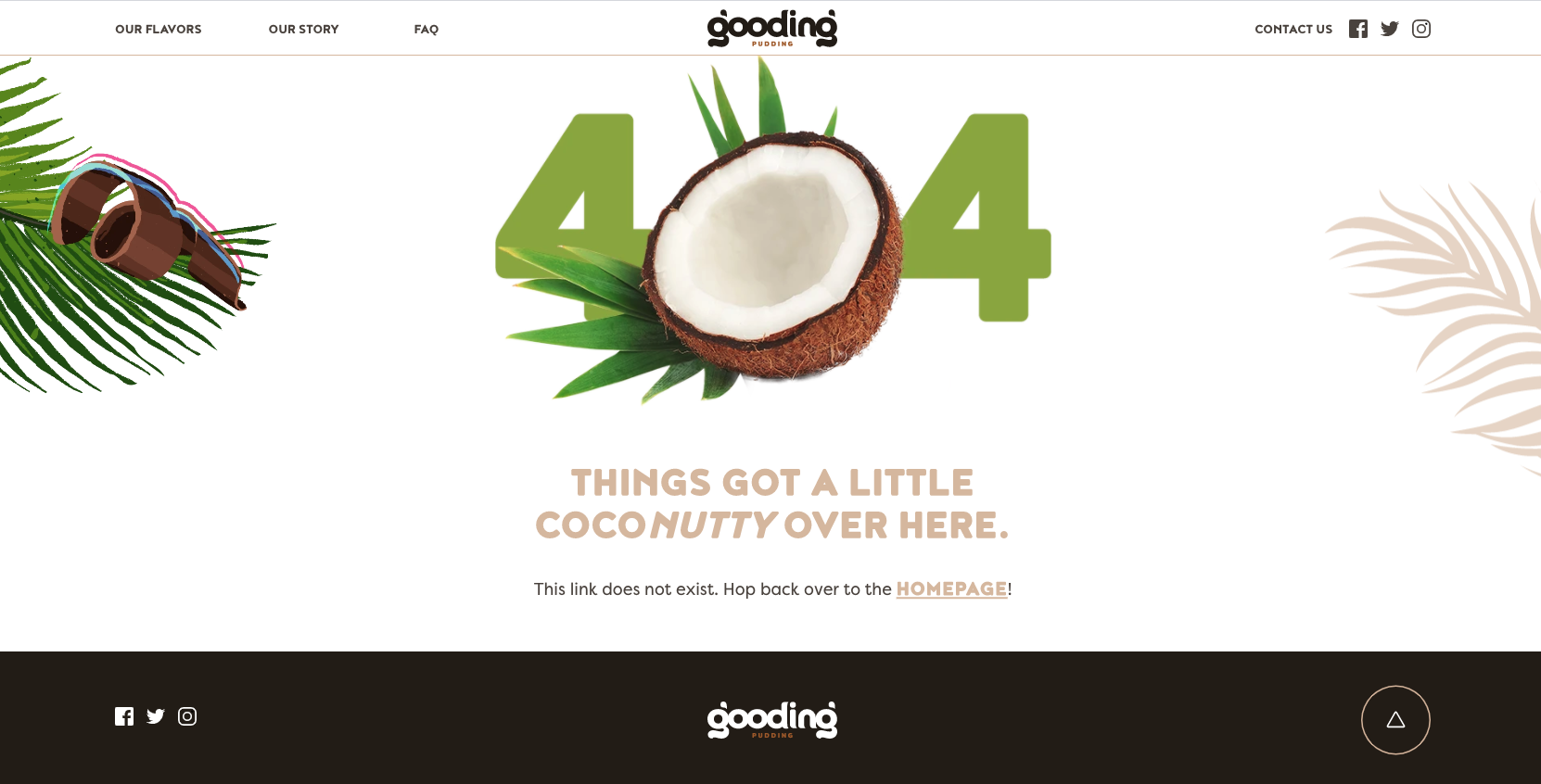
- Duplicate Content: Another low-hanging optimization. Duplicate content appears spammy to search engines, which can negatively impact rankings. This can be avoided by implementing a 301 redirect to the original content or adding a rel="canonical" link to help search engines identify which page should be indexed.
- Redirect Chains: This is common and fortunately a fairly easy fix to implement. If you have multiple redirects in place (e.g. Page A redirects to Page B which redirects to Page C) you've created a chain! And Google is not a fan. The fix here is to take out the middle man and redirect Page A to Page C.
- Load Speed: Few things can impact the performance of your website as a whole as load speed. A slow loading site will kill your sales and marketing experience. Customers and prospects will bounce, causing Google to lower your organic rankings, which means losing organic traffic to competitors and that's never good for business.
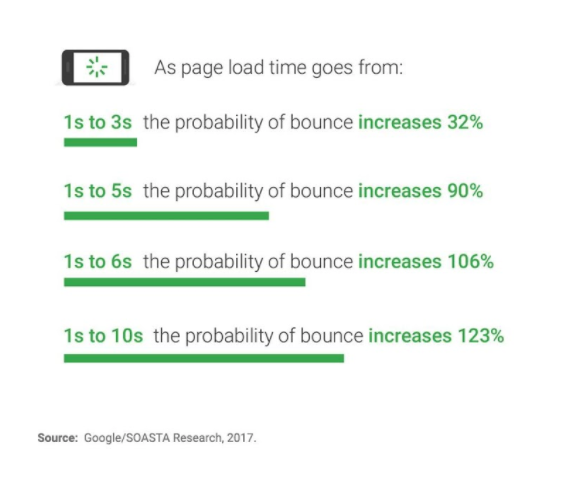
Typically, compressing image files (ideally less than 100kb), leveraging browser caching, and cleaning up your code can have a significant impact on speeding up your site.
Tools like Google Analytics, Search Console, Page Speed Insights and Pingdom can provide visibility into load speed and recommendations for better performance. - Indexation - It's critical that your website pages can be found by both search engines and your actual visitors.
In Google Search Console, Navigate to Index > Coverage to see how your site is being indexed over time and if there are errors.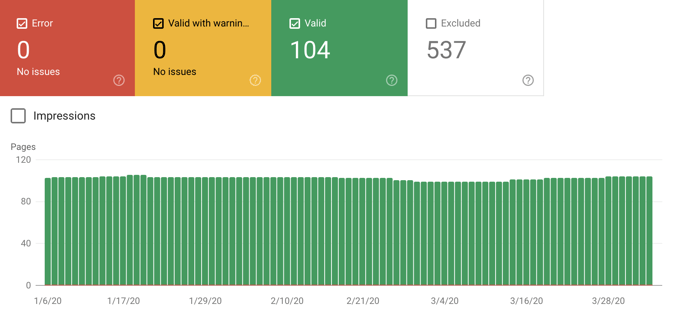
- Mobile Usability - Since Google has shifted to mobile-first indexing (along with the obvious consumer shift - spending more time on smartphones than ever before), your mobile UX not only impacts conversions, it is a major impact on how your site will rank organically as well.
Use Search Console to identify potential mobile errors that are occurring. Take it a step further by pairing these insights with mobile page load speed and bounce rate data to identify any pages that aren't performing well on mobile.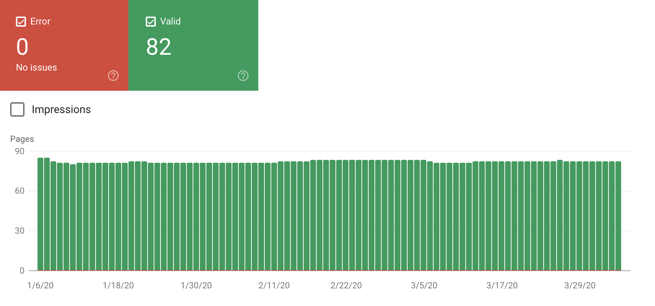
Key Takeaway: If the technical aspects of your site are lacking or have been neglected, they should be cleaned up before implementing the following on-page and off-page strategies.
Once you get to the point where technical fixes can be streamlined and run on auto-pilot, we can shift our focus and resources to optimization, content, and amplification which is where we move from incremental to exponential growth.
On-Page SEO & Advanced Tactics to Outrank the Competition
At this point, we're assuming that you're familiar with creating content around targeted keywords and running content audits to quantify your content performance at the page level. The following section is all about optimizing the performance of your existing content to maximize your organic reach, traffic, and conversions.
- Basic On-Page Optimization: This is a given, but all pages (or at the least all core, blog, resource, product, and FAQ pages) should be optimized around strategic keywords and check the basic SEO boxes.
For example, title tags, meta descriptions, H2s/H3s, alt tags, etc. should all contain thoughtful keyword variants and/or semantic keywords. - Optimize CTR on High Ranking Pages: Use Google Data Studio to find pages that are ranking and receiving a high number of impressions, but with a low CTR.
Be mindful not to overly change your title tags on high ranking pages - the last thing you want is to lose your rankings altogether, but focusing on what makes your content unique will make it more clickable. Here's an excellent resource on the art and science of crafting the perfect title tag. - Focus on "Edge Rankings": There's a massive dropoff in organic clicks for pages that rank 5-10 as compared to 1-4. Concentrate your efforts around optimizing pages that are ranking at the bottom of page 1 and within striking distance of the top few positions.
After that, do the same for pages ranking on page 2. Getting on page 1 alone will make a significant impact on your organic traffic. - Format for Featured Snippets: This is the graduate-level version of the 2 previous items and it's one of our most powerful techniques to drastically increase CTRs and organic traffic. If you're on page 1 for a given query that contains a featured snippet, you're eligible to win that featured placement. Potentially going from the bottom of page 1, to the very top.
Since this is a fairly nuanced topic, I recommend checking out Moz's fantastic resources on discovering and targeting featured snippet opportunities. - Update & Relaunch Content: When it comes to content, don't sleep on the quick wins. Updating and republishing should be a regular mix in your editorial calendar. Review your traffic history in Google Analytics to find pages that were once perennial top traffic drivers, but have recently declined.
Did you create a piece on your industry's 2019 trends? Update it with the 2020 trends, republish it, and watch the organic traffic rise.
You'll maintain any link equity that was acquired with the previous piece while improving your rankings in the search engines and getting more bang for your content buck. - Develop Content Clusters & Interlink: As Google continues to favor comprehensive content (the average word count of a first-page result on Google is 1,890), the structure and organization of your content is more important than ever.
Instead of publishing one-off pages that target a single keyword, we've evolved our content strategies to publish in-depth articles (2,000+ words) that target various related keywords with high search demand (aka a "reach term"). These pages are referred to as "pillar pages".
We then build authority around that pillar page by publishing content around related core topics. Interlinking these content pieces with clear CTAs is critical to help search engines, and users, understand how each page is a part of an overarching content cluster.
Eventually, your content structure will become a strategic masterpiece of interlinked content. When done right, this can transform your site's organic traffic.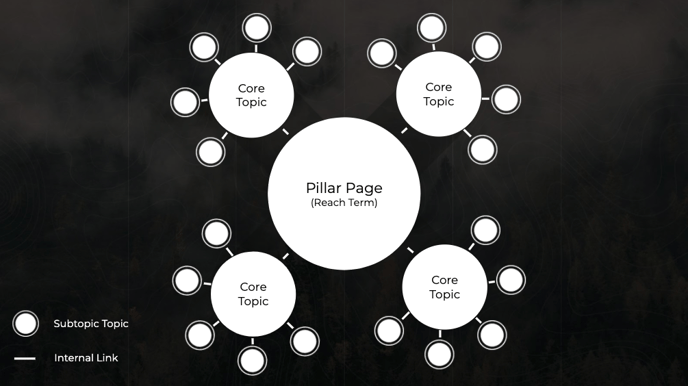
--
*Pro Tip! Include a non-intrusive pop-up form on your pillar page with the option to "take the resource to go" as a downloadable PDF. 90% of website visitors prefer to read lengthy content from a PDF over a web page (source). This provides a indexable content for search engines, a better UX for users, and will boost your lead generation efforts - it's a win/win/win!
--
For an actionable guide on implementing content clusters, this HubSpot blog is a fantastic resource. -
Optimize Top Bounce & Exit Pages: This falls in one of those gray areas between the intersection of SEO and UX. But as marketers, we can all agree that friction in the buyer's journey is not our friend. Improving bounce rates will send positive user signals to search engines that your content is engaging and providing a quality experiment.
Within Google Analytics, you can quickly find the pages where your site visitors tend to terminate their sessions and focus your efforts on reworking those pages for more engagement.
--
*Pro Tip! Create segments in Google Analytics to review bounce and exit pages by device type. This will help you identify potential issues with your desktop, tablet, or mobile experience.
-- - Implement Structured Data: Using markup to enables rich features in the search results (price, availability, reviews, etc.) and aside from a potential rankings boost, you'll likely earn more clicks as well.

If you don't have the development resources to implement structured mark-up to your site, Google's Data Highlighter is a fantastic alternative that can be done quickly without coding experience. - Data-Driven New Content Ideas! Personally, I think this is where the real fun starts. Once you feel you've maxed out your site's optimization opportunities and you've solidified some of the link building strategies covered below, it's time to create.
Perform keyword research to uncover new opportunities - we recommend keeping a living, breathing keyword research document that can be used to map out different content clusters, their organic search demand, and how stiff the competition is. (And here's the free template we use).
Key Takeaway: Once you've achieved a basic level of optimization across all of your core pages, it's time to obsess on creating a better content experience than your competitors. Do that, and you'll win in the search results.
Plus, when you're focused on UX, you're future-proofing your content against any future Google algorithm update.
Off-Page SEO: Increase Traffic, Links, & Authority Through Digital PR + Content Marketing
Off-page is arguably the most difficult, and most valuable effort that can be put into driving substantial organic traffic. But there is a caveat. Your content must be valuable, worth linking to, and it better already be well optimized to rank.
Incorporating the strategies below will dramatically increase your odds of earning follow links which will lift your domain authority and therefore the organic rankings for all of your site pages.
And if you have a new or small site, I recommend spending a disproportionate amount of time here, otherwise all the content you put out will never be able to compete with the larger, established brands in the search results. (Plus, the technical and on-page optimizations should be fairly easy to get a handle on for smaller sites).
- Identify Similar Content Links: Using tools like Moz or Ahrefs, you can see all the sites that are linking to the specific pages that currently rank for your target keywords. This provides an obvious initial outreach list since all of the sites here have a proven history of linking to other sites on the topic.

- Reach Out to Resource Pages: Content that is designed to link out to the best resources on a given topic is a great candidate for link outreach. Not only can it provide a link from a highly relevant source, but it will also provide quality referral traffic to help fill your marketing and sales funnel.
--
*Pro Tip! Using search operators can help you identify resource listing pages quickly. Do a Google search for your target keyword in quotes with words like "resources, best, blogs, etc." to help Google provide a more tailored result.
--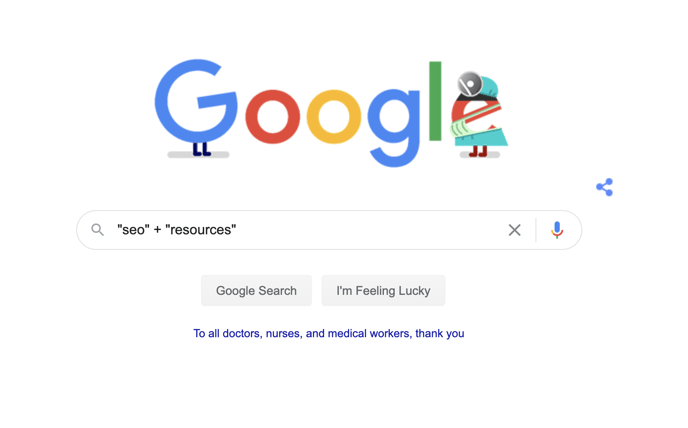
- Incorporate Broken Link Building: No one wants a broken link on their site. And the individual who is maintaining the technical health of the site is likely not the same person that is contributing to the editorial content. So if a link breaks, it often involves multiple people and/or teams, causing a headache over a small issue.
But, if you can be the one to identify a broken link, notify the content owner, and humbly suggest that they insert a link to your content to fix the 404, you'll almost certainly win the link.
The Broken Link Checker Google Chrome extension allows you to quickly scan a web page for broken links. Spend some time digging through relevant articles in your industry, especially resource pages! - Reclaim Unlinked Mentions: This typically pertains more to enterprise brands than SMBs, but considering the low effort / high impact nature, all marketers should be investigating unlinked mentions.
Using tools like Moz, you can combine search operators with email alerts to notify you of new pages that contain your brand name, but don't link back to your brand's root domain. Boom. You've now got a list of low-hanging link opportunities. Reach out the content owners thanking them for the mention and request that they add a link back to your site.
- Publish Original Research: Data-driven content pieces might just be one of the most linkable and shareable types of content on the planet. Journalists and other content marketers constantly need new content to publish daily, and being able to draw from a published study to support a story is huge.
The con? It can cost both time and resources to pull off a well-done research project, but on the flip side, the high barrier for entry means that your competitors likely aren't doing this either.
Before launching a new research project, check with your strategy or market research team, it's possible they've already conducted research and have access to data that can be shared externally. - Collaborate on Co-branded Content: Whenever you can include other organizations or influencers in your content creation, the chances that your content will be amplified (linked to and/or shared) increases exponentially. Creating co-branded content with complementary brands can be a win/win and help expose you to new audiences while sharing added value with your following.
- Engage on Podcast Tours: Reach out to industry-related podcasts to book your brand's thought leader(s) for a podcast interview or conversation. (If you have existing video content of your speakers, your outreach will be much more successful - written content will help as well).
Most podcasts have web pages for each episode with a "show notes" section which contains the guest's bio and links back to the guest's website. Along with the SEO value of relevant links, you'll gain referral traffic and build relationships which can lead to future co-branded content partnerships. - Influencers: If you're already working with influencers on the social side, you can likely get even more value from those relationships if you incorporate them into your SEO strategy.
Frankly, most influencers are laser-focused on social, not SEO. They don't fully understand the value of website links and won't think twice about publishing your guest blog (with a link to your site) for no extra charge!
To Summarize: Link building doesn't scale. It's about relationships and community. And it's absolutely worth it.
Building a strong domain authority is one of the ultimate competitive advantages and it turns your website into an asset. Outranking your competitors for key product and/or service terms is one of the best ways to build sustainable and predictable sales over time.
Extra Credit! Evaluate Your Existing Content with an Automated Content Audit
Before beginning any new campaigns, content, or website initiatives, I highly recommend beginning with an audit and evaluation of your existing content. We've found that significant results can come from simply updating existing content - you don't always need to create something brand new.
Either way, this audit will give you a quantitative assessment of all the webpages on a domain and provide visibility into the content that’s driving results for your business and which pages might be holding you back.